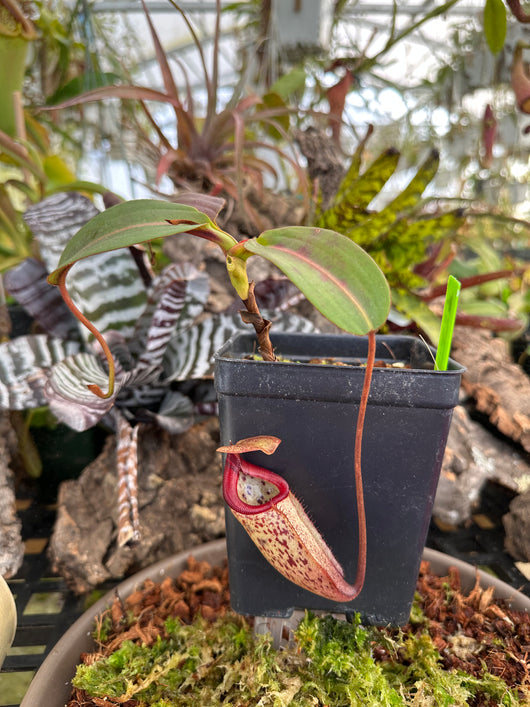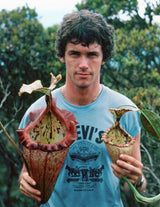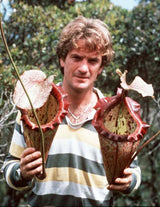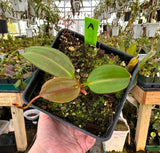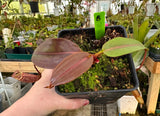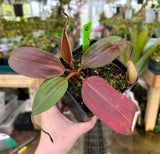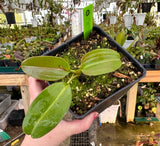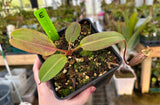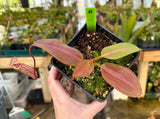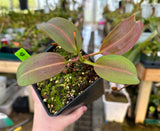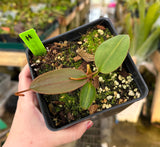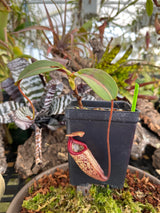Nepenthes x Alisaputrana BE-3865 *SEED-GROWN* *SPECIMENS*
Regular price
$199.00
Sale
All different individuals from seed.
This fabulous natural hybrid is also sometimes available as assorted clones from microprop under BE-3931 and only occasionally appears as seed-grown individuals, which are in limited supply and when exhausted, may never be available again.
The natural hybrid was discovered in habitat near Pig Hill, just outside the Kinabalu National Park by Rob Cantley around 1985 and it’s been one of his life’s ambitions ever since to recreate it from legally obtained mother stock. To this day, it remains the largest and possibly the most spectacular hybrid Nepenthes that Rob - or perhaps anyone - has ever seen. Only one plant was found, and the pitchers were HUGE! The largest of the pitchers found that memorable day and shown in the photos here was shipped to the Chelsea Flower Show in London, where it monopolized press attention, even appearing on National evening news. It was certainly instrumental in helping Adrian Slack to win a Gold medal and a special annual award that year. You can read more about it in the Dec 2000 edition of the ICPS Newsletter at www.borneoexotics.com/files/rajburb.pdf. The original amazing plant was left intact in the wild, but sadly, it was reportedly later bulldozed away as part of the development of an asparagus farm for a wealthy politician.
Borneo Exotics worked tirelessly for several decades to recreate this hybrid in the nurseries and finally succeeded in doing so, using as the female parent a N. rajah donated in-vitro from the Royal Botanic Gardens Kew. The pollen donor is one of their N. burbidgeae, raised from legally collected seeds.
As these are seed-grown individuals, they can be expected to be of variable form and size as they mature, although we are sure that all will be colorful. Even amongst the juvenile individuals we are keeping as stock plants, variation is already becoming evident, as the photos show. The fun of this is that some of the plants may be as good as or even better than the original plant whose photos are shown in habitat.
The specimen you select will be the one you receive.
